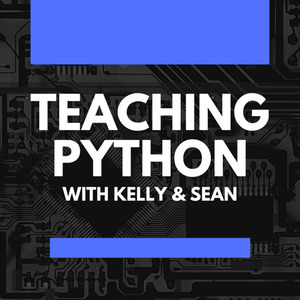
We recently had Dr. Chuck, the professor behind the "Python for Everybody" Coursera course, (4.8 stars from 210,900 reviews) and asked him what he thinks makes his course so great. He shared a wealth of insights from his years of experience teaching millions of learners. Based on our conversation, here are the top qualities that make a fantastic curriculum.
Practicality and Relevance:
Design your curriculum to be practical and applicable to real-world scenarios. Don't just teach concepts in a vacuum, integrate projects and problem-solving activities that relate to students' future careers or everyday lives.
Engagement and Connection:
Build genuine connections with your students. Be approachable, relatable, and open to communication. Share personal anecdotes, use humor, and find ways to make the material resonate with them on a deeper level. This approach ensures students feel supported and stay engaged.
Metaphors and Simplicity:
Make complex concepts become way more digestible by breaking them down into simple terms and using metaphors to illustrate them. This technique helps students grasp difficult concepts more easily.
Gamification and Experimentation:
Incorporate elements of gamification and encourage experimentation. This allows students to learn through trial and error, without fear of failure, helping them retain knowledge and keeps them motivated. Dr. Chuck emphasized, "Gamification to me is the idea that you can sit and try something over and over and over... failure is not punished, you just keep trying."
Autonomy and Flexibility:
Give students some control over their learning journey. Offer self-paced options, personalized projects, and multiple paths to achieve objectives. Design courses to be accessible and adaptable to different learning paces.
Continuous Improvement and Feedback:
Regularly update your curriculum based on student feedback and the latest teaching methodologies. Ask for feedback through surveys, peer reviews, or even informal chats. Dr. Chuck discussed the importance of crafting and refining his course based on student feedback and teaching experience from 2008 to 2012.
Access to Resources and Support:
Provide students with the necessary resources and support, such as office hours, tutorials, documentation, forums, and mentorship opportunities. Ensure that help is available when students encounter difficulties.
Integrating these curricular tips into your computer science course can significantly improve the learning experience. Here are some practical suggestions to get you started:
- Project-Based Learning: Design coding projects that solve real-world problems. Maybe it's building a simple web app, analyzing data, or even creating a game.
- Gamified Assessments: IReplace traditional exams with coding challenges or interactive quizzes that feel more engaging and less intimidating.
- Flexible Learning Paths: Allow students to choose projects aligned with their interests and provide multiple ways to demonstrate mastery of concepts.
- Open Communication: Foster a welcoming environment where students feel comfortable asking questions and seeking help. Consider implementing online forums or dedicated Q&A sessions.
Fun Fact: According to Coursera's 250 most popular free online courses of all time, Dr. Chuck's course ranks highly alongside other popular courses like "The Science of Well-Being" from Yale University and "Learning How to Learn" by Barbara Oakley and Dr. Terrence Sejnowski.
